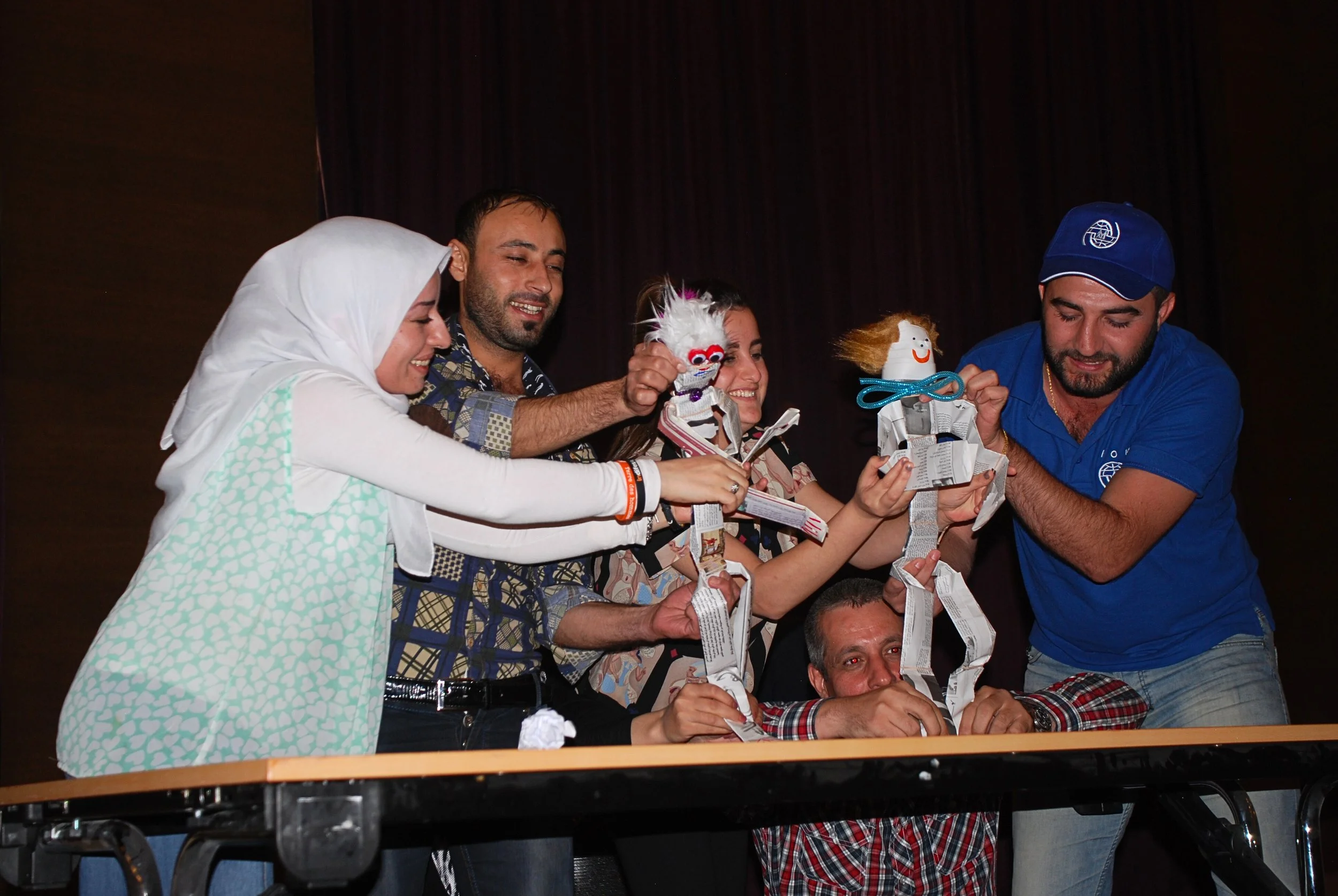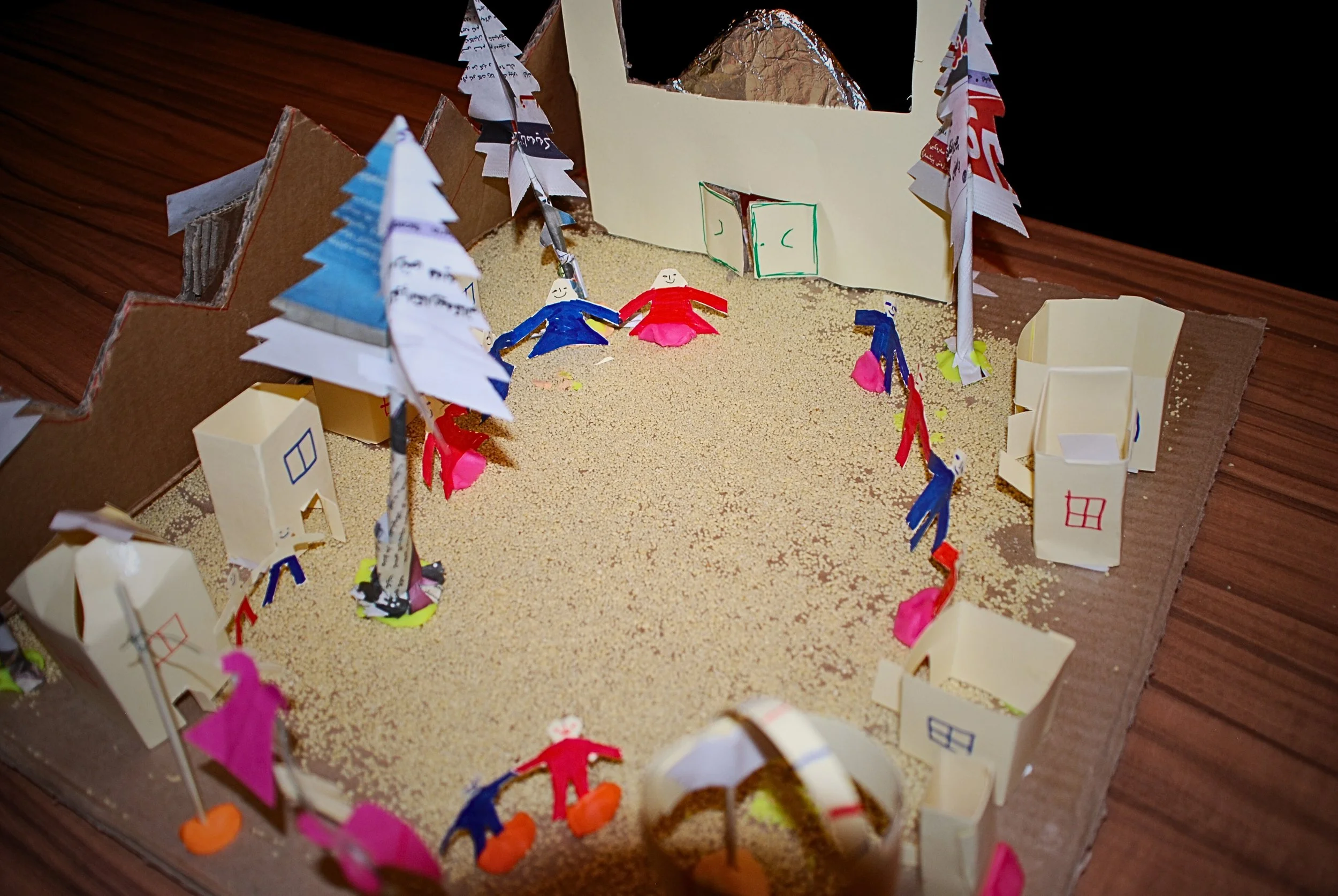
OUR
PUPPETRY
Puppets allow us to explore thoughts, feelings, and behaviours from a comfortable distance. They offer a unique perspective into what drives us and others, and through it, the gift of greater awareness. Puppets encourage interaction. Their oddness and charm are hard to resist, and through collaborative group activities puppets allow us to localise, explore and challenge issues in ways that are poignant and meaningful.
Puppets empower and give us a voice. They deflect attention so that even shy personalities can readily participate. Through our partners we have heard many stories about how children and young people will eagerly express things ‘behind’ a puppet that they wouldn’t normally have the courage to talk about, be that abuse, sadness, or pooping in the bush. Puppets allow us to be someone else, liberating us in a moment and creating deeper understanding of our own stories and behaviours as well as other people’s.
We give children puppets and they become puppeteers. They don’t have to be skilled puppeteers – what’s important is what’s going on in their imagination as they get lost in the process of playing together in activities catalysed by the No Strings film they have watched, and its messages and characters.
Puppetry is a diverse art form, and we use different types, from our big mouth characters (which we have made locally) to shadow puppetry, tabletop puppets made from newspaper and rubber bands, and models that come alive in the imagination. Each have their different strengths and appeals. Some are better suited to older children, adolescents, or adults. Materials must be locally available, inexpensive or, where possible, free.
Scroll down for more on our different puppetry styles.
Big Mouth Puppetry
Big mouth puppets are versatile, much-loved tools and are thus a central part of many of our sessions. With training, facilitators can integrate them into playful, captivating activities that encourage children, adolescents and adults to take on the role of puppeteer, working together to create skits that bring drama and personal meaning to key messages.
Puppets may be abstract characters, a body of emotion possibly. Or they might give a voice to things that have none - Mr Poop is a good example, and Madam Mosquito.
They may be someone you are not, a member of the opposite sex for example, or someone you distrust, fear, or hate even, because they are different, allowing us to step into another’s shoes.
Shadow Puppetry
Shadow puppetry dates back more than 2,000 years, with roots in countries like China, India, Indonesia, and Turkey. It can be beautiful, with a multitude of different visual effects, or much more simple.
Either way, it requires that groups of participants work together to bring critical messages to life from their own storytelling perspectives, enabling performers to express from a place where they are hidden.
Shadow puppetry requires good teamwork and communication skills. It is powerful in that it allows groups to interpret and share their own messages, and have them critiqued by their peers.
Tabletop Puppetry
Tabletop, as we use it, calls upon three people to manipulate and perform an upright puppet. Requiring close collaboration, it helps overcome feelings of self-consciousness as participants express through the puppet together.
Tabletop can be extremely effective using little more than a few sheets of newspaper, and offers profound insights into human emotions and relationships.
Group Models
Models are a great way of stepping back to consider risks and vulnerability, and links between human behaviour, health, safety and wellbeing.
Because a group has worked on a model together, there is a natural drive to explain it to others.
Models might also used to explore more profound issues in our protection or peace programmes.




















